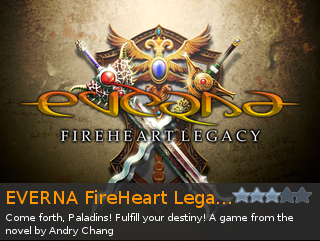Tiamat is a monster/goddess in Babylonian and Sumerian mythology, and a central figure in the Enûma Elish creation epic.
Etymology of the nameJohn C. L. Gibson, in the Ugaritic glossary of Canaanite Myths and Legends, notes that "tehom" appears in the Ugaritic texts, c. 1400-1200 BC, simply meaning the "depths of the sea". Such a depersonalized Tiamat (the -at ending makes her feminine) is "The Deep" (Hebrew tehom), present at the beginning of the book of Genesis. Her name seems ultimately to have been a Sumerian one as in that language Ti = Life, and Ama = Mother, suggesting her original name may have been "the mother of all life" (Thorkild Jacobsen, (1968) "The Battle between Marduk and Tiamat" Journal of the American Oriental Society, Vol. 88, No. 1 (Jan. - Mar.), pp. 104-108.) This title was given to the divinised 1st King of the 3rd Dynasty of Kish, Kubau, who reappears in Hurrian mythology as Kheba (identified with the "mother of the Gods" — Hannahannah) and with the Hebrew cognate Havva (Eve), also called "the mother of all living" in Genesis). ("Adam and Eve in Babylonian Literature". American Journal of Semitic Languages and Literature Vol 15 (1899), pp.193-214)
Tiamat's appearanceThough Tiamat is most often described by modern authors as a sea serpent or dragon, no ancient texts exist in which there is a clear association with those kind of creatures. Within the Enûma Elish her physical description includes, a tail, a thigh, "lower parts" (which shake together), a belly, an udder, ribs, a neck, a head, a skull, eyes, nostrils, a mouth, and lips. She has insides, a heart, arteries, and blood. The depiction of Tiamat as a multi-headed dragon was popularized in the 1970s as a fixture of the Dungeons & Dragons roleplaying game thanks to earlier sources associating Tiamat with later mythological characters such as Lotan and others.[citation needed] Though the Enûma Elish specifically states that Tiamat did give birth to dragons and serpents, they are included among a larger and more general list of monsters including scorpion men and merpeople, none of which imply that any of the children look like the mother or are even limited to aquatic creatures.
MythologyApsu (or Abzu, from Sumerian Ab = water, Zu = far) fathered upon Tiamat the Elder gods Lahmu and Lahamu (the "muddy"), a title given to the gatekeepers at the Enki Abzu temple in Eridu. Lahmu and Lahamu, in turn, were the parents of the axis or pivot of the heavens (Anshar, from An = heaven, Shar = axle or pivot) and the earth (Kishar), and Anshar and Kishar were considered to meet on the horizon, becoming thereby the parents of Anu and Ki. Tiamat was the "shining" goddess of salt water who roared and smote in the chaos of original creation. She and Apsu filled the cosmic abyss with the primeval waters. She is "Ummu-Hubur who formed all things". The god Enki (later Ea) believed correctly that Apsu, upset with the chaos they created, was planning to murder the younger gods; and so slew him. This angered Kingu, their son, who reported the event to Tiamat, whereupon she fashioned monsters to battle the gods. These were her own offspring: giant sea serpents, storm demons, fish-men, scorpion-men and many others. Tiamat possessed the Tablets of Destiny, and in the primordial battle she gave them to Kingu, the god she had chosen as her lover and the leader of her host. The Gods gathered in terror, but Anu, (replaced later first by Enlil and after the 1st Dynasty of Babylon, by Marduk, the son of Ea, in the late version that has survived), first extracting a promise that he would be revered as "king of the Gods", overcame her, armed with the arrows of the winds, a net, a club, and an invincible spear.
And the lord stood upon Tiamat's hinder parts,
And with his merciless club he smashed her skull.
He cut through the channels of her blood,
And he made the North wind bear it away into secret places.Slicing Tiamat in half, he made from her ribs the vault of heaven and earth. Her weeping eyes became the source of the Tigris and the Euphrates. With the approval of the elder gods, he took from Kingu the Tablets of Destiny, installing himself as the head of the Babylonian pantheon. Kingu was captured and was later slain with his red blood mixed with the red clay of the Earth to make the body of humankind, created to act as the servant of the younger Igigi Gods.
External links
Enuma Elish
The Babylonian creation story
Book review: Dogged by Michael R. FLetcher
-
*Book links:* Amazon, Goodreads
*ABOUT THE AUTHOR: *Michael R. Fletcher is a science fiction and fantasy
author, a grilled cheese aficionado, and a wh...
4 hours ago













No comments:
Post a Comment